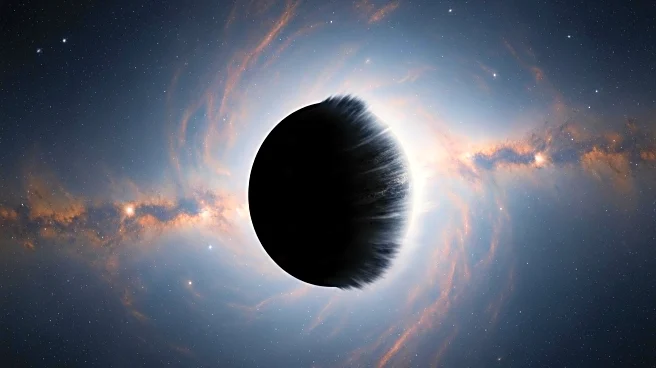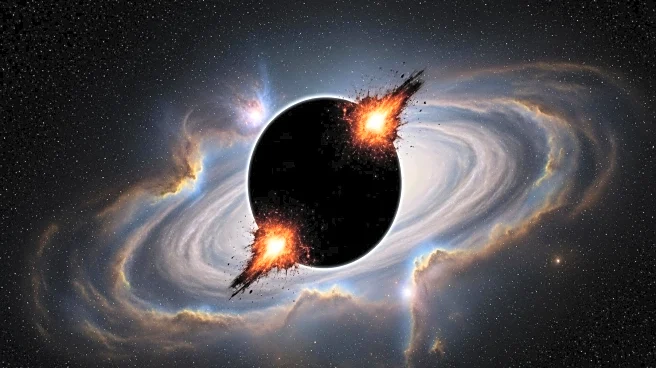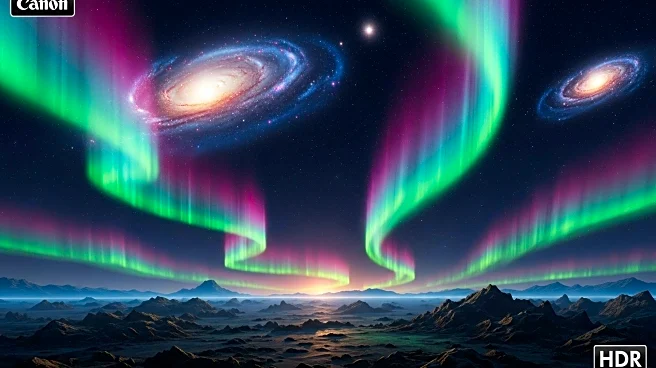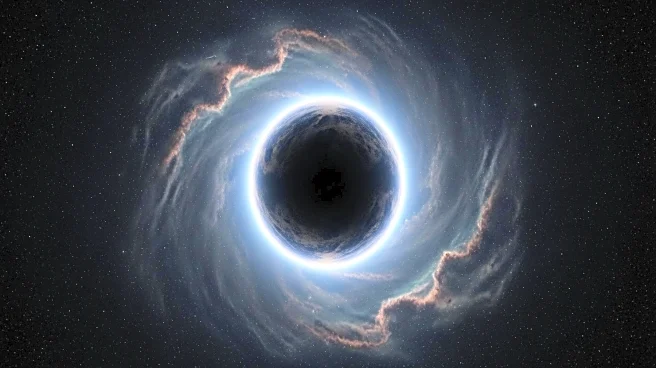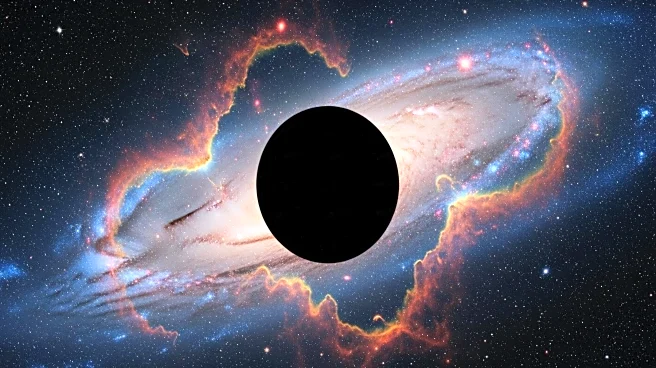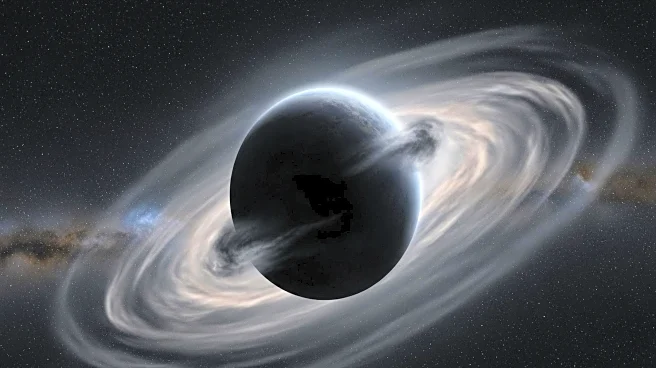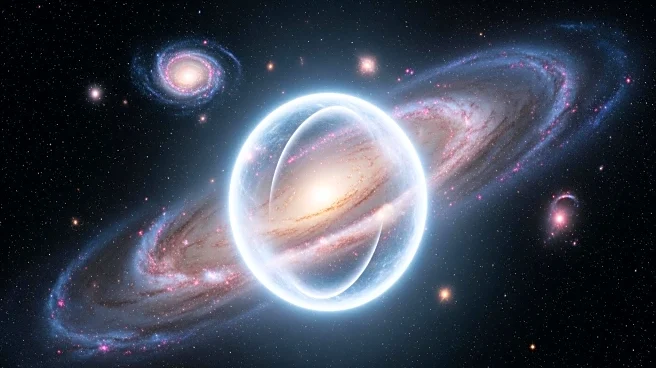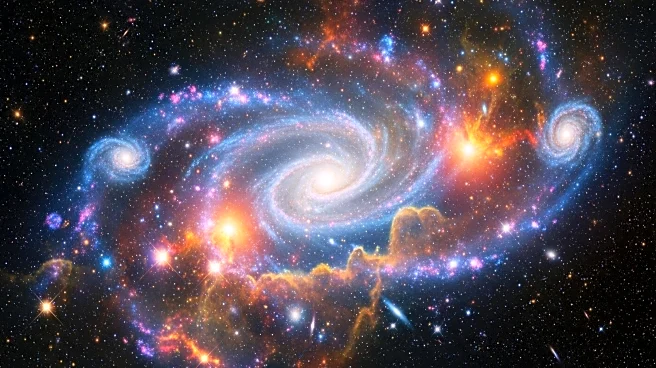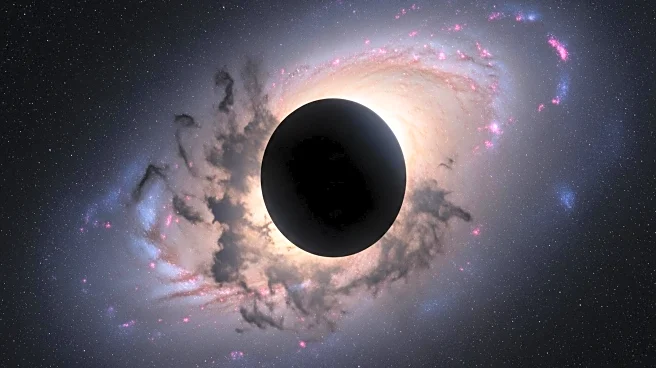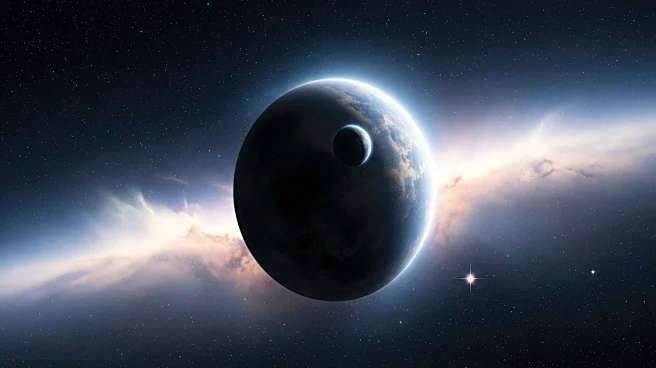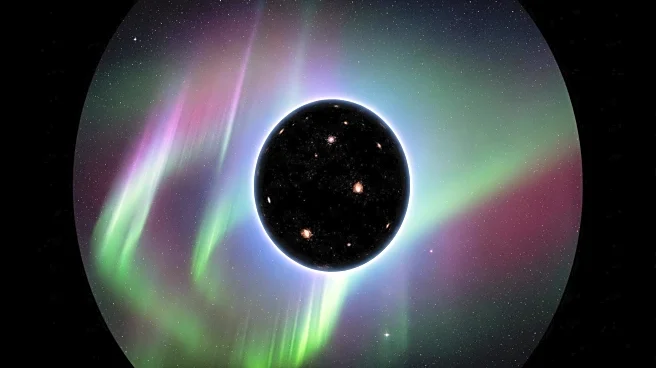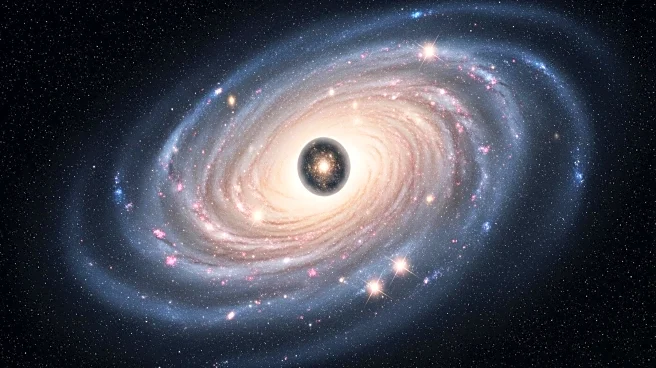What is the story about?
What's Happening?
Scientists have discovered a massive 'rogue planet' named CHA 1107-7626, which is expanding at an unprecedented rate of 6.6 billion tons per second. This object, located approximately 620 light-years from Earth, is estimated to be 5-10 times larger than Jupiter. Unlike typical planets, rogue planets do not orbit a star and travel freely through space. The study, conducted using the European Southern Observatory's Very Large Telescope, reveals that the planet is in its infancy, being only one or two million years old. The accretion process, where the planet absorbs gas and dust, is causing significant changes in the chemistry of the disc surrounding it, including magnetic activity and water vapor detection.
Why It's Important?
The discovery of CHA 1107-7626 challenges existing notions about planetary formation and behavior. The rapid expansion and unique characteristics of this rogue planet provide valuable insights into the processes that govern planetary development. This phenomenon, typically observed in stars, highlights the dynamic nature of planetary bodies and could lead to a reevaluation of how planets are classified and understood. The findings may influence future astronomical research and theories regarding planet formation, potentially impacting the scientific community's approach to studying similar celestial objects.
What's Next?
Further observations and studies are likely to be conducted to understand the long-term behavior and characteristics of CHA 1107-7626. Researchers may focus on the implications of its rapid growth and the changes in its surrounding disc. The scientific community will be interested in monitoring its development and comparing it with other known rogue planets. This could lead to advancements in technology and methodologies used in space exploration and observation.
Beyond the Headlines
The discovery raises questions about the classification of celestial bodies and the criteria used to differentiate between stars and planets. The unique characteristics of CHA 1107-7626 may prompt discussions on the need for new categories or definitions within astronomy. Additionally, the presence of water vapor and magnetic activity could have implications for understanding the potential for life or habitability in similar environments.
AI Generated Content
Do you find this article useful?
